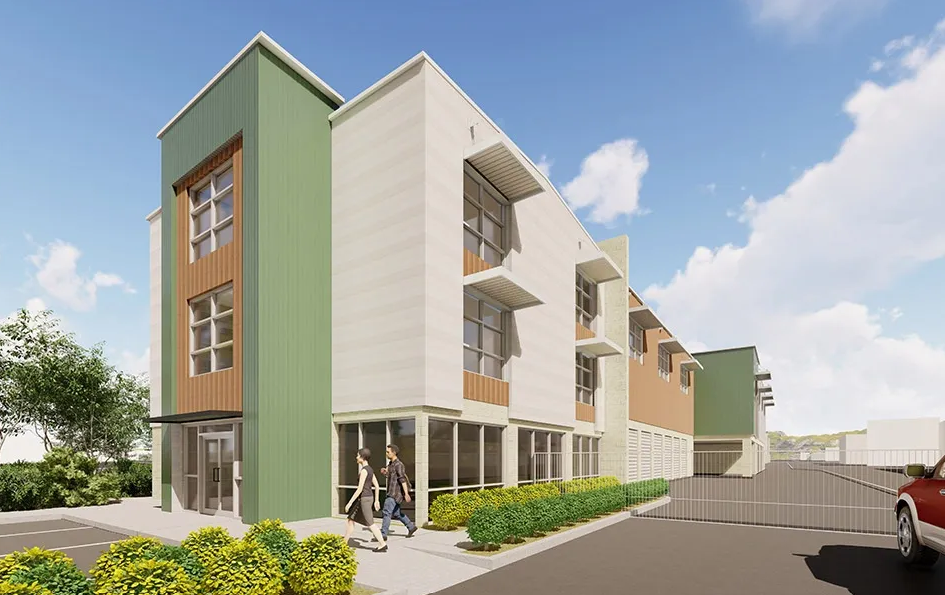A Bird’s Eye View
Monthly Newsletter

The Role of Bridge Debt for Today’s Commercial Real Estate Owner
June 2024
Key Highlights
Over the past 12 months, many pro formas have fallen short when it comes to projecting stabilized revenue as well as rent growth, and this has created difficulty for owners looking to take on permanent financing.
Bridge debt fills a critical void in today's capital markets environment because it secures the time needed for asset owners to source permanent financing under more advantageous conditions in the future.
An emerging trend toward a contraction in interest rate spreads on new bridge loans could appeal to a broader set of borrowers in the second half of the year.
Subdued Rent Growth Continues to Shape the Bridge Debt Discussion
As we move toward the halfway mark of 2024, rent growth continues to present a challenge for commercial real estate owners. Moody’s (1) reported that at the end of Q1 2024, multifamily rent growth was flat on a year-over-year basis. In the self-storage sector, RentCafe (2) reported that the national average monthly rent for a storage unit landed at $135 in April 2024. This represented a 3.6% year-over-year decrease, and rents have been mostly flat since the third quarter of 2023.
It is clear that a significant amount of commercial real estate demand was pulled forward during the pandemic, but more recently, macroeconomic factors have softened demand across asset classes. Inflation has continued to eat into the budget of renters, and with the exception of existing customer rate increases (ECRIs) in the storage sector, rising prices have made it difficult for owners to pass along rent increases without risking decreased occupancy. In the face of persistent price level increases, the Fed has maintained a tighter monetary stance, and this has dampened housing market activity and self-storage demand in many markets across the country. At the same time the construction of new storage facilities has remained brisk, with over 54 million square feet of new supply expected to come online by the end of 2024.
For many owners, these market conditions have resulted in a rocky transition from construction or bridge financing into a perm loan. Lenders remain cautious and have taken comfort in the fact that, given the strong development pipeline, they can choose to finance the strongest projects while shying away from others. In a market like this, bridge debt is taking on a role of increased importance as owners look for a solution to support the project until stabilized interest rates and net operating income (NOI) can be demonstrated to perm loan providers.
It is clear that a significant amount of commercial real estate demand was pulled forward during the pandemic, but more recently, macroeconomic factors have softened demand across asset classes. Inflation has continued to eat into the budget of renters, and with the exception of existing customer rate increases (ECRIs) in the storage sector, rising prices have made it difficult for owners to pass along rent increases without risking decreased occupancy. In the face of persistent price level increases, the Fed has maintained a tighter monetary stance, and this has dampened housing market activity and self-storage demand in many markets across the country. At the same time the construction of new storage facilities has remained brisk, with over 54 million square feet of new supply expected to come online by the end of 2024.
For many owners, these market conditions have resulted in a rocky transition from construction or bridge financing into a perm loan. Lenders remain cautious and have taken comfort in the fact that, given the strong development pipeline, they can choose to finance the strongest projects while shying away from others. In a market like this, bridge debt is taking on a role of increased importance as owners look for a solution to support the project until stabilized interest rates and net operating income (NOI) can be demonstrated to perm loan providers.
Taking a Strategic Approach to Bridge Debt Positions Owners for Success
During periods of slow rent growth, apartment and storage owners with construction financing or a bridge loan from an acquisition are increasingly forced to choose between rolling into a perm loan at less-than-favorable terms or exploring bridge debt alternatives to buttress the investment until the rent roll can be improved. In recent months, owners have come to view bridge debt as a tool that can be used to gain flexibility and time to improve occupancy rates, rental rates, and cash flow to enhance the asset’s appeal to perm loan providers. Additionally, many owners are looking to in-the-money interest rate caps as a potential tool to enhance the maximum available loan dollars in a refinance scenario.
By using the bridge term to bolster the rent roll and position the property more favorably in the market, owners can eventually secure better terms on permanent financing once stabilization takes hold and rent growth resumes. Through this lens, bridge debt is increasingly being viewed as an appealing solution for owners in need of more time to produce the kind of rent roll results that attract perm loan financing on terms that leave room for satisfactory cash flow. Over the last twelve months, lenders have grown more comfortable originating bridge financing to owners in need of additional time, and there have been instances where lenders, previously averse to extending bridge financing, reversed course. Given the success that owners have had in using bridge debt to achieve objectives, it is possible that activity in this corner of the capital market will increase in the coming months.
By using the bridge term to bolster the rent roll and position the property more favorably in the market, owners can eventually secure better terms on permanent financing once stabilization takes hold and rent growth resumes. Through this lens, bridge debt is increasingly being viewed as an appealing solution for owners in need of more time to produce the kind of rent roll results that attract perm loan financing on terms that leave room for satisfactory cash flow. Over the last twelve months, lenders have grown more comfortable originating bridge financing to owners in need of additional time, and there have been instances where lenders, previously averse to extending bridge financing, reversed course. Given the success that owners have had in using bridge debt to achieve objectives, it is possible that activity in this corner of the capital market will increase in the coming months.
What Owners Can Expect Through the Second Half of 2024
As we near the halfway point in the year, some bridge loan lenders have found it difficult to attract new business given the tighter underwriting criteria that was put in place in response to the tense capital markets environment that prevailed in mid-2023. Recently, the struggle on the part of lenders to generate originations growth has spurred an emerging, but noticeable, contraction in interest rate spreads on new bridge loans. It appears there is a subtle push among lenders to improve pricing as a means of remaining relevant and appealing to asset owners who require more time to capitalize on the business plan.
From the owner’s perspective, the market is presenting unique challenges for long-term, fixed-rate loan underwriters because there are instances where an asset shows strong occupancy, but rents continue to lag pro forma projections. Sourcing perm financing for situations like this is challenging because it often requires owners to accept terms that may not allow for key return hurdles to be met. As long as perm loan underwriting criteria holds steady and challenging cases remain present in the market, bridge debt is likely to be a compelling alternative.
From the owner’s perspective, the market is presenting unique challenges for long-term, fixed-rate loan underwriters because there are instances where an asset shows strong occupancy, but rents continue to lag pro forma projections. Sourcing perm financing for situations like this is challenging because it often requires owners to accept terms that may not allow for key return hurdles to be met. As long as perm loan underwriting criteria holds steady and challenging cases remain present in the market, bridge debt is likely to be a compelling alternative.
Final Thoughts
As commercial real estate owners navigate the complexities of subdued rent growth and the resulting challenges in transitioning to permanent financing, many are likely to consider bridge debt as a strategic option to fortify the investment until rent growth picks up, perm loan underwriting criteria loosens, or transaction volumes return to levels that allow for sales to take place under a firmer valuation environment.
(1) Q1 2024 Housing Affordability Update: The Rise and Fall of Pandemic Darlings
(2) Self Storage Faces Widespread Rate Drops in Major Cities, Yet Construction Activity Remains Steady
Talonvest Capital specializes in structuring and negotiating comprehensive capital solutions for owners of industrial, self-storage, multifamily, office, and retail assets. We create tailored capital solutions for our clients by sourcing cutting-edge lending programs and advising on capital markets trends.
Stay Informed
Subscribe to stay up to date on current trends in the perm, bridge, and construction lending market based on our real deal experiences and discussions with banks, life companies, debt funds, private lenders, and CMBS lenders.

